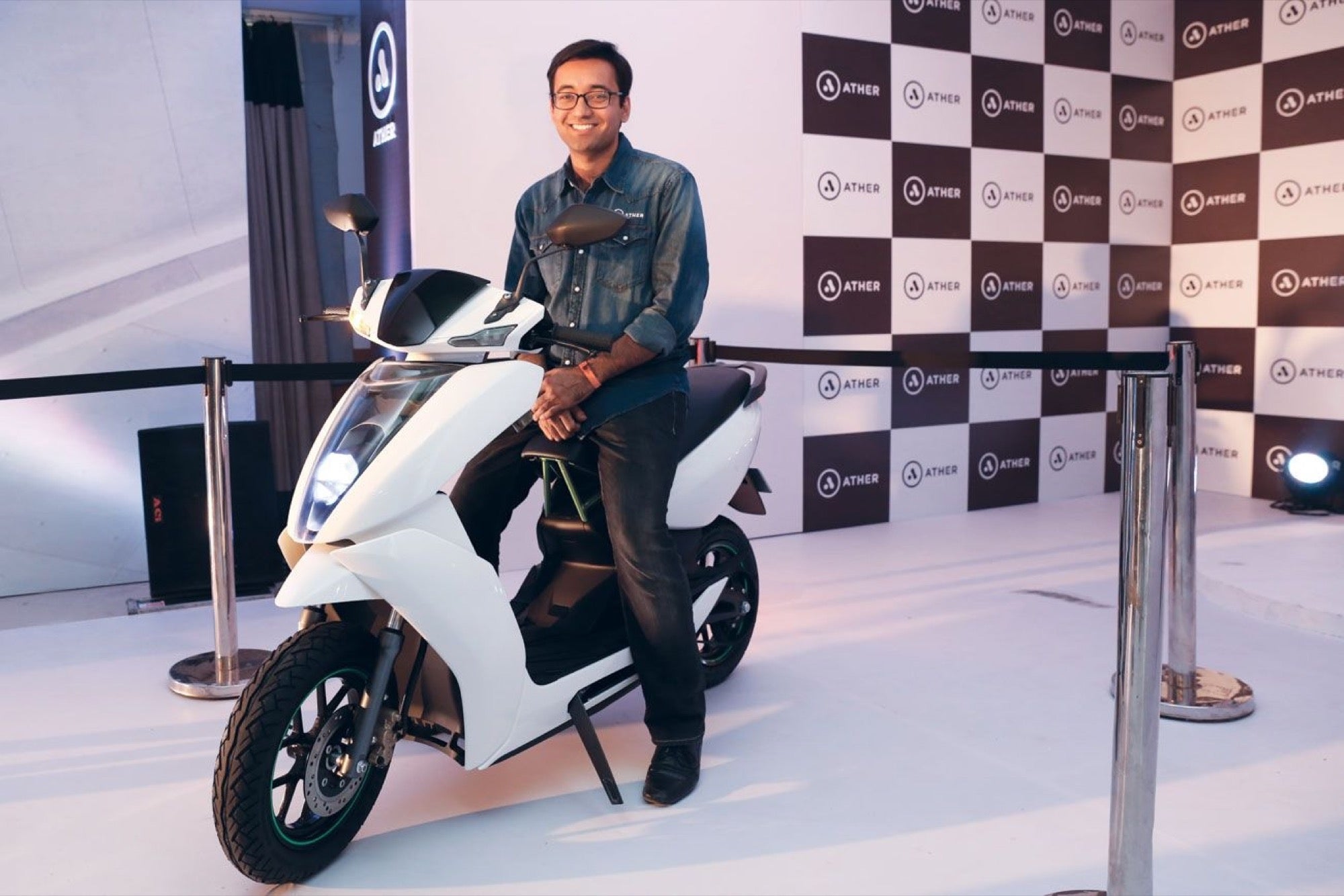These Startups Are Electrifying India's Scooters A slew of startups, manufacturing electric or e-scooters, are making headway
By Sandeep Soni
Opinions expressed by Entrepreneur contributors are their own.
You're reading Entrepreneur India, an international franchise of Entrepreneur Media.

To replace more than 200 million vehicles on Indian roads with electric vehicles (EV) by 2030 is one heck of a "formidable' task for the government, having finally woken up to the exigency of making electricity as the de facto transportation fuel. "Formidable' because EVs are just less than one per cent of total vehicles (around 80 per cent of which are two-wheelers), and 14-year time is way too less for India- an overly bureaucratic country.
However, a slew of start-ups, manufacturing electric or e-scooters, are already making headway given the enormous opportunity they have, however, equally enormous are their barriers to growth.
Large two-wheeler manufacturers, like Hero and Mahindra, and start-ups, like Ather Energy, Ampere Vehicles, and Go GreenBOV, are pressed for reimagining scooters into e-scooters, and not motorcycles, because of cost efficiency, comfort with contemporary features, easy maintenance, preference from female riders and light weight. Hence for a nascent e-two wheeler market, e-scooters are best form for early experiment for an increasingly environment-conscious urban population, looking at getting value-for-money.
Need Kick-Start
According to industry body, Society of Manufacturers of Electric Vehicles India (SMEV), sale of EVs picked up by 37.5 per cent in 2015-16, however, the number is still negligible. Around 22,000 EVs (out of which around 20,000 were e-scooters) were sold in 2015-16 compared to 16,000 in 2014-15. "The market potential is overwhelming but its current size is not even worth talking about," says Sohinder Gill, Director, SMEV.
"China has exerted policy pressure to get a million EVs in its 208 cities within a year. In India, while there are schemes and roadmaps, but the government is yet to create a policy pressure," adds Gill referring to the need to replace petrol scooters with e-scooters for commercial use within two-three years. Gill is also the CEO of Global Business for Hero Electric – the EV arm of the Hero Eco Group, which holds 70 per cent market share.
The government, in 2013, had launched National Electric Mobility Mission Plan (NEMMP) 2020, aiming to put six to seven million electric or hybrid vehicles on roads. It further introduced Faster Adoption and Manufacturing of (Hybrid) and Electric Vehicles (FAME India) scheme in union budget (2015-16), which offer incentives up to Rs 29,000 for two wheelers and Rs 1.38 lakh for cars.
The scheme helped revive sale of EVs, however, start-ups don't consider it to be a long term pull factor to drive sale. "It will help kick-start the industry. However, many manufacturers don't want to depend on subsidies for a long time. That's not healthy for the business," says Tarun Mehta, Co-founder of Ather Energy. Launched in October 2013, Ather Energy will soon start taking preorders for its smart scooter S340.
Finance For Fuelling Up
Banks and other financial institutions are yet to launch any financial assistance schemes for EV buyers in India, unlike petrol vehicles. Start-ups, like Ather Energy, see it as their biggest challenge. "94 per cent of vehicles sold in India, especially two wheelers, are financed by bank or other financial organizations. However, banks (public or private sector), and non-banking financial institutions are yet to launch loan schemes for EVs," says Dhivik Reddy, Co-founder of Bengaluru-based Go GreenBOV.
The company offer its e-scooters on lease to e-commerce, delivery and other logistics companies on its B2B side. "We tried everything to get momentum in the B2C market but that didn't happen as expected, and we had bankers knocking at our doors. So as a survival measure we ventures into B2B," adds Reddy.
Mehta and Gill understand banks' inhibition as the market is nascent and there are not enough data points for insurers and financial partners to build their lending model. However, the lack of government will to walk the talk faster than they can, is apparent. "Public sector banks particularly don't act until they are pushed against the wall to do a certain thing. Financing is already available for electric rickshaws, which is a riskier mode of transport, then why not for EVs," maintains Gill.
"Kitna Deti Hai' – The Ultimate Obsession
When it comes to buying a vehicle, there is no bigger obsession for Indians than the kind of mileage it can provide. A famous brand campaign by car maker, Maruti Suzuki, "Kitna Deti Hai', explains this obsession in three words. Coming back to it, two wheelers run anywhere between 50-60 kmpl of petrol, which costs around Rs 63 in Delhi. Compared to it, e-scooters returns mileage of 30-120 km per battery charge, wherein the battery pack takes 1.5-8 hours for full charge. So the cost per km is significantly low. Despite this, people are skeptical to shift to e-scooters.
To address this problem, the government has decided to setup more charging stations. Currently, there are around 100 charging stations across the country. Lack of charging infrastructure might be a discouraging factor for the car buyers, with the issue of range anxiety (running out of charge with no source to recharge battery while commuting). But, for e-scooters, which can be charged with a normal smartphone charger, range anxiety is truly a mindset problem.
Electrifying New Pockets
Apart from e-scooters, there are start-ups in e-bicycle space, like Spero (meaning hope in latin), manufactured by Coimbatore-based Milltex Engineers that produces jute machineries. Spero recently raised Rs 38.65 lakh via Bengaluru-based crowdfunding platform Fueladream.
Another is Hulikkal Electro, a Coimbatore-based start-up, that claims to be India's first e-bicycle maker using lithium-ion battery. Tork Motorcycles, on the other hand, is India's first electric motorcycle company that last year shifted focus from building hispeed electric motorcycles to a commuter bike called T6X. It will be available for test ride by end of 2016 and for sale by end of 2017.
"Charging can be a problem during inter-city travel, since we don't have proper infrastructure. However, travelling within the city is not an issue," said Mehta. His company is planning to setup charging points at every two-three km, beginning with Bengaluru, Chennai and Pune. "An e-scooter that gives 60-120 km per battery charge is enough to run for an entire day. Moreover, the battery can be charged at home," Dhivik Reddy said.
E-scooters, on an average, cost Rs 30k-50k, slightly lesser than petrol scooters, for e.g. Honda Activa, India's largest selling scooter costs around Rs 54,000 (Delhi). The batteries cost the most as the mineral like lithum or lead, which are used to make those are not mined in India. Hence, they are imported from China, Taiwan, and Korea in Asia; and Brazil, Argentina, and Chile in Latin America.
"Even when government says "Make in India', it is not entirely true. For two key minerals, neodymium magnets for motor application and lithium and lead, needed for making the battery are not mined in India," says Hemalatha Annamalai, Founder and CEO, Ampere Vehicles. Annamalai launched Coimbatore-based Ampere Vehicles focusing on offering mobility solutions to people in tier two and three towns.
Because of low volumes, start-ups can't afford to spend on marketing EVs and neither sector banks will offer finance. And until they offer finance, volumes eventually won't go up. So apparently, it is a chicken and egg situation, even as the government has to throw its weight around to open up financing options that will eventually lead to mindset shift of people to buy EVs. But would that happen by 2020 as NEMMP mission? It seems less electrifying.
(This article first appeared in the Indian edition of Entrepreneur magazine (October 2016 Issue).












